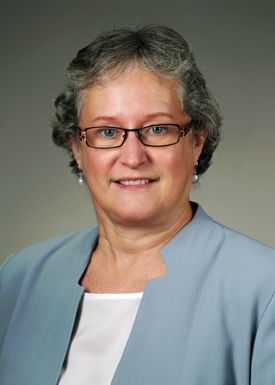

“I think some people are angry for good reason. This disease hasn’t gotten enough attention.” Vicky Whittemore
My partner and I made our way to Vicky Whittemore’s office in a building off the NIH campus. Security was tight as always. We signed in and were escorted up to her office. It turned out that she was in a bit of a pickle. Someone in charge of buildings had decided that her office – and presumably the other offices in the building – didn’t meet code. The office, which looked entirely normal to me, was a bit too large. Either they were going to have to cut it in half, she joked, which would make it too small, or she might have to move.
Vicky Whittemore is the National Institute of Neurological Disorders and Stroke (NINDS) liaison to the Trans-NIH Myalgic Encephalomyelitis/Chronic Fatigue Syndrome Working Group. Basically she’s our go-to person for chronic fatigue syndrome (ME/CFS) at the NIH. She gets it about ME/CFS and she’s committed to our success. This isn’t the first time, either inside or outside the NIH, she’s advocated for under-served diseases.
A PhD and the chief scientific officer at a non-profit for a rare genetic disease that her nephew has, she was first invited to serve on a NINDS council. The NIH apparently liked what they saw and recruited her to be the Epilepsy Program Director. She inherited two small ME/CFS and/or POTS grants and was told, “By the way, this is a kind of challenging patient community”, but was assured that her non-profit experience would serve her well.
It has. Caught between an ME/CFS community with a long history of demanding far more support than it’s gotten, and an NIH with its dreary record of decades of neglect, she’s not in an easy spot but she’s won the trust of everyone who’s worked with her. Besides, she has some relevant history of her own. A medication temporarily left her with orthostatic hypotension which caused her blood pressure to drop when she stood.
With the IOM and P2P reports out, she said Collins asked, at an Institute Directors meeting, what are we doing for ME/CFS and what more could we be doing? We know the answer to that question – three ME/CFS research centers, one data center, and a big intramural study.
It’s not enough, but after the long declines in support from the NIH it was a nice step forward. After the NIAID Institute at the NIH cast ME/CFS out into the wilderness in the early 2000s – terminating the three ME/CFS research centers in the process – funding declined and declined. By 2010, adjusting for inflation, the NIH was spending as much on ME/CFS as it had in 1992. Today, adjusted for inflation, it’s spending just a bit more than it did in 1995.
Thanks to Vivian Pinn, the leader of the Office for Research On Women’s Health (ORWH), which took ME/CFS in, we had a home but it was the smallest of homes and it came with a Working Group that had no budget.
A Tale of Two RFA’s
Vivian Pinn did get us an RFA (Request for Applications (for research funding)) in 2006; the smallest RFA possible without it being absolutely ridiculous, she told me. That was the most she could get, and even then it wasn’t easy. Like Vicky Whittemore a decade later, it took her over a year (plus the intervention of Senate Majority Leader Harry Reid) to get the Working Group to spit up the cash, and even then at the end she had to dig into the ORWH’s small coffers to get it funded.
Still it was notable that in 2006, Pinn, (without the backing of any NIH directors – let alone the head of the NIH) operating from one of the smallest programs in the NIH, managed to scrape together a $4 million-a-year RFA. It was even more notable that she did it during a time when the NIH budget was getting squeezed, having failed to keep up with inflation four years in a row.

The Trans-NIH ME/CFS Working Group provided about the same amount of money for ME/CFS in 2017 as they did in 2006…
Eleven years later, Vicky Whittemore also had trouble getting the Institutes to pony up, but but consider what had changed. Francis Collins, the leader of the NIH, and Dr. Koroshetz, the director of NINDS, one of the largest Institutes at the NIH, made public promises in the media and in blogs to the NIH staff to reinvigorate ME/CFS research. Both the prestigious Institute of Medicine report on ME/CFS and the NIH-funded Pathways to Prevention (P2P) report drew attention to the pitiful funding ME/CFS was receiving.
Eleven years of research later, prominent researchers like Ian Lipkin, Ron Davis, and Derya Unutmaz had joined the field. We had better, more effective advocacy, and having gotten major increases in its budget for several years, the NIH had cash to spend.
We seemed to be set up for a big win and we did get a win – the Research Centers are an important step forward. Yet even with these tailwinds at our back, all the Working Group – our reinvigorated Working Group – managed to cough up was about $5 million a year. Figuring in the rate of inflation, that 5 million dollars balances out to almost exactly what Vivian Pinn, working from within the little ORWH during those difficult budgetary times, got us eleven years earlier.
Despite all the progress, the Working Group – which remains chronic fatigue syndrome’s sole source of funding – remained as tight with its purse and as ill-disposed to fund ME/CFS as it had been eleven years ago. Two NIH-funded reports, the NIH director’s promises, more promising research than ever, and more and better media coverage appear to have made no difference at all.
The Individual Researcher Grant Problem
We haven’t made even a small dent in our biggest problem – the pitiful number of individual grant applications the NIH receives from ME/CFS investigators. We expected a boom in grant applications from the 7 research centers which did not get funded. Each research center had to provide three projects – each of which could have been turned into either an RFA or an R21 grant. Twenty-one potential, mostly formed grant applications were sitting out there, but a year later the boom still hasn’t arrived.
Freedom of Information Act requests indicate that two grant review panels in 2018 have examined a total of 10 grant applications, putting us on track this year to match the lowest number of ME/CFS grant applications on record – which happened to be set last year.
Besides Ron Davis’s grant application, which he managed to get in immediately (and got funded), only one other research center applicant has put in an application. Almost a year after the centers were announced, amazingly, disappointingly, frustratingly, we’ve seen no uptick in ME/CFS grant applications.
That’s important because the NIH puts 75% of its research funding not into research centers but to reward individual grant applications, and the losing centers seemed to be an easy way to increase those applications. Vicky said she is working with researchers from the unsuccessful research centers; we’ll see what happens at the last review session of the year.
A Request for Applications
A big question of mine coming into the meeting with Vicky was the possibility of an RFA – a fully funded grant award to individual investigators. A program announcement (PA) which states what types of research the NIH is willing to fund is in place, but while a PA is better than no PA, a PA has NEVER stimulated research in this field.
If the NIH is going to get individual researchers on board in significant numbers, it’s clear to just about everybody that an RFA is needed. Everybody that is but the NIH, and Vicky disputed the idea that an RFA was necessary.
Part of Vicky’s job is to get successful grant applications passed and she’s encouraging investigators, including those from the unsuccessful research centers, to apply, and she said several are working on applications. She hopes the Research Centers will stimulate grads/post docs in the Centers to apply as well. These younger investigators have an easier path to a grant and she believes younger investigators are beginning to see opportunity in the field.
The tale of the losing research centers is not done but It’s hard to imagine that the Research Centers – which Ian Lipkin believes are being asked to do too much for too little – would ever spawn the kind of increases in grant applications needed to grow this field at a good pace. Say two post docs from each research center submitted a grant application – that’s six grant applications. Projecting that two of them succeed (30% success rate); that’s just two more studies funded…Not enough.
Compare that with what a $10 million RFA that committed the NIH to spending $10 million each year for the next 4 or 5 years on ME/CFS and to pay for 20 or more large-scale studies. Researchers would flock to that RFA like bees to honey. If the 2006 RFA was successful – it brought in dozens of applications eleven years ago – an RFA today would get an even better response.
All we need is some funding, and not a lot by NIH standards but we’re once again stuck with the Working Group woes.
The Working Group Woes
Vicky is clearly between a rock and a hard place when it comes to funding. Since the Working Group is where our funding is coming from, I put the question point-blank to her – is the Working Group willing to fund another initiative? The answer was basically no.
That was no surprise. The old adage that there’s power in numbers isn’t working out for us. The WG contains representatives from no less than 23 Institutes. It’s true that some don’t have much of a dog in this fight. The National Institute on Minority Health and Health Disparities, National Institute on Alcohol Abuse and Alcoholism, The National Institute on Drug Abuse are all pretty tangential to ME/CFS, but others do have a stake in this fight.
NIAIDS and NINDS are leading the pack in terms of funding, but other Institutes that aren’t still have a legitimate interest in ME/CFS and nonetheless have huge budgets.
- National Heart, Lung, and Blood Institute (cardiovascular system, blood flows) – $3 billion budget
- National Institute of Arthritis and Musculoskeletal and Skin Diseases (pain) – $586 million budget
- National Cancer Institute (fatigue) – $6 billion budget
- National Institute of Dental and Craniofacial Research (TMJ) – $415 million budget
- National Institute of Diabetes and Digestive and Kidney Diseases (metabolism, gut) – $2 billion budget
- National Center for Complementary and Integrative Health (alternative health) – $130 million budget
- National Human Genome Research Institute (genes!) – $500 million budget
- National Institute on Aging (premature aging, fatigue) – $1.6 billion budget
How much would it take for 23 Institutes to fund a $10 million RFA that produced 20-25 major studies and jumpstarted this field? About $400,000 a piece; literally chicken-feed to Institutes of this size – yet they won’t do it. They want to wait to see how the Research Centers turn out and then reassess. That’s clearly the very long route to success and it puts a lot of pressure on three small research centers.
Seriously…
“Give us a chance to prove we’re serious, because we are.” Francis Collins in 2015
Serious: requiring much thought or work; detailed, in-depth, deep, profound, meaningful
Let’s hope that the Working Group isn’t doing another of their ten-year plans: that is, do one semi-major thing every ten years and then coast the rest of the way. I don’t think it is, but we should note that it’s been almost three years since Francis Collins said, “Give us a chance to prove we’re serious, because we are”, and over three years since the IOM report stated that “remarkably little research funding” has gone into ME/CFS.
So far the NIH is badly failing the serious test. Serious is not a one-off initiative that couldn’t provide more funding than the last one-off initiative did 11 years ago. A Working Group with a large group of Institutes unwilling to put any money forward doesn’t exactly scream commitment.
Three years after Francis Collins made his pledge, no progress has been made in the most important aspect of ME/CFS funding – individual research applications. If the NIH is really committed to getting this field going, that should be causing significant worry.
A strategic plan within a reasonable time frame to provide well-funded research centers (they are not well-funded) and to bring new researchers into the field – now that’s serious. We don’t have that, but we do have a new initiative.
New Working Group
The formation of a new ME/CFS working group called the NANDS Council Working Group for ME/CFS Research is a good sign, and it’s no surprise that NINDS – the most active Institute in ME/CFS – is producing it. The NIH has produced projects such as the State of the Knowledge Conference that didn’t pan out, but this Working Group has more of a strategic feel; it seems designed to set the stage for an initiative. Let’s hope so.
This project is all NINDS. It’s a working group designed to report to the NINDS advisory council (National Advisory on Neurological Disorders and Stroke (NANDS) Council) on how best to advance ME/CFS research.
The thirteen-person group is composed of advocates (Jen Brea, Carol Head), doctors (Lucinda Bateman) and researchers (Cook, Komaroff, Schutzer and others). It’ll be using the IOM and P2P reports and outreach to assess the extent to which the NIH is addressing the opportunities and gaps in ME/CFS research.
While it has some holes, it’s a clever attempt to get this field moving. With the Trans-NIH Working Group showing no interest, as yet, in assessing the impact the IOM and P2P reports are having, Vicky Whittemore and NINDS are going to do it for them. (CFSAC would have been an excellent place to push for that assessment but it is now gone.)
The report will also, “Consider unique opportunities to train and empower a pipeline of young investigators, as well as investigators new to the field”. That wording suggests the group may propose funding new (unique) programs to bring younger and/or new investigators into the field. Given that the existing programs to bring new young investigators in has drawn a blank so far, an entirely new program aimed specifically at getting them and new investigator into ME/CFS field is certainly needed. Creating a robust program would fill a major need.
The group is also tasked with identifying an “effective structure” to enhance research-related collaboration and communication between, “advocacy organizations, individuals with ME/CFS, researchers, and federal agencies.”
There are a few downsides. Because the IOM report was not specifically tasked with identifying research gaps and the P2P report came out of a workshop, the group lacks a really strong foundation. It would have been best to have a full-fledged IOM report that identifed research gaps, but funding a report like is apparently too much ($1-2 million) for the Working Group.
The fact that this is all taking place within NINDS – not the NIH as a whole – means its effects may be limited to NINDS as well. NINDS has a huge budget, though, and could by itself, if it chose to, turn the funding and prospects for this disease around.
Kudos to Vicky Whittemore and NINDS for another creative approach to moving this disease forward. The report will be done in about a year.
It should be noted that the new NINDS Working Group is no substitute for work by the Trans-NIH Working Group – which embraces the entire NIH – nor is it a replacement for CFSAC, which embraced all the agencies – the NIH, CDC, FDA, etc. – in the Department of Health and Human Services.
Research Centers Spawning New Efforts
When I asked Vicky if there’s any research area she’s particularly interested in, she said her main frustration was having one investigator studying B-cells, another studying autoantibodies, another T-cells, but no one trying to tie all these together in a large group of patients, and seeing where the patterns form.
At least one study – the collaborative study from the NIH-funded research studies – will do exactly that. Each research center will be doing different analyses on the same set of patients. Then the Data Center will step in and do the really tricky part – trying to meld all the findings together. Being able to bring immune, cardiovascular, pathogen and other data together into one coherent whole – and perhaps showing how an immune problem contributed to viral reactivation or how a genetic problem is linked to a T-cell problem, or something similar – could tell us much.
It’s hoped that the research centers will spawn further efforts, and they already have. A Canadian research center is joining the show and Vicky hopes that Euromene will create a similar center. It should be noted that the NIAID generously funded a European Biobank for the past five years and just signed on for five more years. They ow have a large repository of biospecimens, some of which are going to be used in the Centers’ work.
Vicky also said that other research groups can join in the Centers’ work. That brought to mind Ron Davis’s Stanford Research Center, Nancy Klimas’s Nova Southeastern Center, Jarred Younger’s Univ. of Alabama at Birmingham Center, and the new Harvard Research Center. Why not burst some boundaries and find a way to have these Centers participate as well?
NIH ME/CFS Conference
An NIH-funded ME/CFS Conference turned out to be another happy outcome of the research centers getting funded. It’s a logical way to highlight the Research Centers’ and others’ work. Having the conference on the NIH campus itself is a smart way to get other NIH investigators interested in this disease. It’s only a start, though.
It should be noted that that Vivian Pinn also produced an NIH conference (the State of the Knowledge Conference) which ultimately brought us nowhere. A conference by itself is a nothing more than a good idea; a conference embedded in a strategy to push ME/CFS research forward is another matter entirely.
Still it’s nice to see an ME/CFS conference on the NIH campus. Its only downsides are its short length – only two days – and the probability that it’s going to inadvertently knock the longer IACFS/ME conference off the calendar in 2019.
The Fatigue Program and Conference That Got Away
It was a tantalizing prospect: fatigue researchers from across the disease spectrum meeting, comparing findings and finding opportunities for collaboration.
When Vicky and Dr. Koroshetz began digging into the fatigue literature, they quickly realized two things: how little was known about it and what a huge and common problem it was. They got buy-in from the Institutes, gathered a committee together, and went to the Common Fund – a branch of the NIH that funds interdisciplinary activities. They wanted to produce an initiative not focused simply on ME/CFS but on fatigue in general.
They passed the first hurdle; the Common Fund liked their concept of an interdisciplinary fatigue initiative and asked them to create a five-year program.
Then they hit a strange roadblock. It turned out there was so much interest and so much needed to be done that the group had trouble coming to a focus. Different groups were interested in so many different things: fatigue in the normal population, fatigue across lifespan, fatigue in different diseases (ME/CFS, MS, cancer, neurological fatigue, etc.), fatigue and sleep, etc. that they couldn’t agree on a common set of deliverables.
It didn’t help that Vicky was writing up the RFA’s for ME/CFS at the same time and simply didn’t have the bandwidth to do two tricky and complex projects. She still wants, though, to get the program going.
It would be a superb way to do several things: a) integrate the fascinating research findings on metabolism, the autonomic nervous system and exercise in ME/CFS into other diseases; bring new researchers into the ME/CFS field; get ME/CFS patients access to many other studies; piggyback on research done in other disciplines; clarify the distinction between PEM and ME/CFS; and determine how unique PEM is or is not to ME/CFS, etc.
Let’s hope this program gets restarted, finds a focus and then gets funded generously by the Common Fund.
Conclusion
Let’s not take away from what’s been accomplished. Since 2014, NIH funding for ME/CFS has tripled. ME/CFS now has three research centers, an amazingly in-depth intramural study, and after at least a decade of discussion but not a lot of action, the common data elements are done. The NIH will be hosting an ME/CFS conference next year and NINDS has again stepped to the fore, creating a new Working Group that will deliver a report on how to move ME/CFS forward. We’re lucky to have a committed leader – Vicky Whittemore – working on our behalf, and the support of Francis Collins and Dr Koroshetz. We’ve come quite a ways in a couple of years.
Three years after Francis Collins said, “Take us seriously because we are”, however, the NIH is still failing the serious test. No strategic plan has been developed; no deliverables have been announced; the research centers while helpful, are small and overburdened; the intramural study, while incredibly broad, contains few patients (n=40); and we haven’t made any progress in cracking the most important nut of all – having researchers apply for grants.
We seemingly had all our ducks in a row – promises from the head of the NIH and NINDS, a powerful NIH-funded report that made a media splash, better advocacy, more media attention. more prominent researchers, plus by 2017 Unrest had come out. All that prompted the Working Group to do, though, was provide about the same amount of limited funding it had barely coughed up over a decade earlier.
A few seeds have been planted and they will move this field forward but not with the momentum needed. The fact that our funding is dependent upon a still very stingy Working Group is worrisome indeed. It’s important to note that we’ve had research centers before, we had an RFA before, we’ve had NIH conferences before; none of these will necessarily result in anything significant in the absence of a sustained effort to grow this field.
The question is: what is going to happen now? How are we going to prevent history from repeating itself? We’re mostly walking down the same road we did 20 years ago – praying that a few small research centers are going to spark this field, that we’ll get lucky, that something will catch fire.
It’s true that it could happen. Our researchers have more sophisticated tools now. Cortene could work out or Ron Davis or Nancy Klimas or someone else could light this field on fire. More opportunities for a breakthrough exist now than ever before but the point is that we’re hoping to catch a lucky break. The NIH hasn’t produced anything close to the kind of sustained effort needed to crack the back on this illness.
Plus we’re at a fragile stage. Our two big wins – the IOM and P2P reports – are behind us and our entry to the DHHS – CFSAC -is gone. The Working Group is looking more like the Working Group of the past than the reinvigorated Working Group we were promised. Yes, the NIH has moved – but it’s still not serious about this illness. Lacking a sustainable pathway to success, we’re still flying on a wing and a prayer. Francis Collins’s promise remains unfulfilled.
Your Support Is Needed
Health Rising’s East coast trip provided a gold mine of information, inspiring a wealth of articles. including the one you just read. Upcoming articles from the trip include one on Dr. Klimas’s exercise study, a possible new treatment for fibromyalgia, talks with Jarred Younger, Avindra Nath, Dr. Pridgen and – on the return home – the folks at the Bateman-Horne Center. Next up on the travel agenda is the Stanford Symposium. Travel provides many opportunities but travel to the East Coast, in particular, is expensive for a small organization like Health Rising which hasn’t even begun to recoup its trip costs. If you find conference reports and other travel related blogs helpful and want to see these in the future, please support Health Rising.
Articles From the East Coast Trip
Advocacy
From the Dysautonomia Conference
- 2018 Dysautonomia International Conference I: Small Fiber Neuropathy, POTS, MCAS and Vagus Nerve Stimulation
- The 2018 Dysautonomia Conference Pt. II: Could You Have a Spinal Fluid Leak? An ME/CFS, POTS, FM Perspective
- Dysautonomia International Conference Pt III: The Autoimmunity Revolution in POTS
- “Sticky Blood” – Antiphospholipid Syndrome, POTS, Chronic Fatigue Syndrome and Fibromyalgia – The Dysautonomia Conference #4
- Stagnant Hypoxia – Where Chronic Fatigue Syndrome and Hyperadrenergic POTS Meet?
- Promise Fulfilled – A New Chronic Fatigue Syndrome / Fibromyalgia Practitioner Steps Forth
The IVIG Series













So, the National Cancer Institute (fatigue) has a $6 billion budget?
My ME/CFS was triggered by my chemotherapy – my cancer is long gone, but my mitochondria and immune and endocrine systems crashed, viruses (EBV) reactivated, and autoimmunity developed, lraving me at high risk for leukemia or lymphoma.
Three cancer survivorship clinics aren’t much help – i got an apology from one at a major cancer center saying, “Yes, we screw people up with treatment, but no one here knows how to fix them… It’s a big problem.”
One of Ron Davis’ researchers told me there is a definite cancer subset that they’re interested in and I fit the subgroup.
If just a little of that $6 billion could go to the cancer subset of ME/CFS, it sure might help… I live in fear of more cancer with no NK cells to fight it with…
Which makes it all the more strange that the NCI – which IS spending money on cancer fatigue – is not pumping more dollars into our effort – and linking up the researchers in both fields!
That’s what the Fatigue Initiative could do if it ever gets going. I think it’s a great idea.
I had a laugh reading a typo in this blog as I imagine Cort’s computer’s autocorrect must be so use to the word ‘inflammation’ by now that it changed ‘inflation’ to ‘inflammation’ in the sentence “… adjusting for inflammation”
Then while writing this comment my autocorrect did the exact same thing, haha
No kidding. Not a bad autocorrect in this case 🙂
“we haven’t made any progress in cracking the most important nut of all – having researchers apply for grants.”
That is not surprising at all. Just combine this quote with
“grant applications. Projecting that two of them succeed (30% success rate)”
and add some math. Let us suppose each individual grant application is about a project of 1.5 years length in average. In order to get funding going for 6 years, one needs four consecutive approved projects. 6 years of reasonable secure financing is about what is needed to attract a new researcher/Phd candidate. One could argue an established professor could apply for the grant, but in practice they are not doing all 10+ approved projects they have. They mainly do treating patients, giving lectures to students, go to conferences, are board members of many committees and research journals, think about the research direction of their group, fulfill faculty roles such as the rotating presidency of a department or coordinating contacts with the field, apply for grants… and eating and breathing a bit in their spare time.
Basically they need to attract young researchers. If other fields with far less pitfalls can provide these prospective candidates a stable chance at 6 years of research if research qualities of the candidate are good, then we need to match that in order to attract promising candidates.
Now assume only one such individual grant application is pending at any single instance of time per researcher (the actual one doing the work, Phd candidate or post-Phd researcher). Then this researcher needs 4 consecutive grants approved. With an individual chance of 30% approval rate per application we have a chance of P = 0.3*0.3*0.3*0.3 = 0.0081 or 0.81% the researcher gets funded continuously over the entire 6 years: this is plain ridiculous!
That 30% isn’t fixed, but depending on success of the previous research. Let’s suppose approval rate increases to 45% if the previous project ended successful and drops to 15% if it wasn’t. With 4 projects, the first application will have 30% chance as their is no history. Only the success rate of the first 3 projects is considered as the success of the 4 determines financing chances after the considered 6 years period. Suppose a *very* high success rate of projects: 2 out of 3 are a success. Such success rate in our field is unseen of and would make this researcher pure gold! This makes the chance of getting funded for 6 years P = 0.3*0.45*0.15*0.45 = 0.0091125 or 0.91% for what is considered a future top researcher / Nobel price winner. Plain ridiculous!!!
Things are worse. It’s very hard to time research applications such that a new grant starts when another finishes. In fact, that requires applying for a new grant before results of the current study are in and even then it may be simply impossible by having fixed project lengths and application approval dates. That is deterring from doing actual research and decreases approval rates as one can’t claim the current project is a clear success yet. It also creates continuous stress for the researcher as both his academic and financial future is in near constant uncertainty.
In reality, such promising researcher very often will be helped out if his group has some mass and financial reserve. He will be temporary put on another project. But that can easily block him temporarily from returning to a newly approved project and allow him only to start the new ME project months late. Results will be in later again and when applying for the next funding the researcher will have to admit the current project is behind schedule. That sound a bit like “isn’t going that well” to a grant approval committee. If a group isn’t big enough to provide the researcher some backup, other research groups seeing his potential will be very happy to snap him up and persuasive in not letting him go to the ME field again.
In short: hoping to get researchers apply on mass for individual grants if they can’t get a more fixed “research institute” type grant in a very tough field that is underdeveloped is going against any sense of realism IMO.
🙂 Thankfully, when a grant is approved it’s usually approved, subject to checks that the project is moving along, for 4 or 5 years so it’s set for a good period of time.
I agree that young investigators are probably the key. Vicky said the pathway to a grant acceptance is easier for them. Unfortunately, if I remember correctly, I don’t think we’ve had one young investigator apply for a grant.
Breast Cancer Fatigue is also rampant in ME/CFS EDS HI MCAS HATS, etc. I hate Politics it is all a waste of time & for decades we have been lobbying them & changes never happen…The only time they care is when their family members fall on their faces with this illness we need to fund Private Research & expose their total filth to the Masses
I agree that its been miserably slow but changes have happened. The NIH really is spending 3x’s on ME/CFS as it was a couple of years ago and it really is funding 3 research centers which are doing good work that they wouldn’t have been doing if not for the NIH. Plus there’s the intramural study – very, very complex study.
But even if we didn’t get those things the NIH would still be worth the effort because it has so much more money than non-profits, private funders, etc. At $15 million a year it’s funding more research than the OMF, SMCI and other non-profts put together – and this is just a start…
We have to keep enrolling the NIH that it’s their duty and it’s in their interest to fund this disease.
I also wish I could find a Cure for ME/CFS I would sell the patent to the Mafia for distribution, not to these Government Clowns
It makes absolutely no sense to “dig into the fatigue literature” when the CFS syndrome was not coined due to fatigue.
I had once believed that the moment any researcher was told how the CDC deliberately “dumbed down” the Tahoe outbreak to disguise what appeared to be an outbreak of ME, they would realize they had been fooled by this transparent trick… and correct themselves.
One has to wonder why they do not, or will not, make this simple adjustment.
https://www.youtube.com/watch?v=tPFYxpreesE&feature=youtu.be
Consider this: fatigue is our entry way to understanding post-exertional malaise. IF we can get fatigue research going it will naturally uncover the PEM, figure out if its present in other disease; in other words studying fatigue is the way to bring attention to PEM.
Otherwise it will never happen – not on a broad scale – nobody outside of ME/CFS knows what PEM is…
Plus there is an enormous amount of fatigue in ME/CFS. It is either the highest or the second highest symptom in all studies. While it is just one symptom it’s an important and its one that can get other researchers to study this illness. It’s worth it in that capacity as well.
Hi, I don’t know if I am being naive but how about us, the cfs /fibro community to draw a list of billionaires in the US and around a world and ask for donations. I know donations are tax deductible in the US (I live in France).
I like to take the opportunity to thank Cork, for giving so much of his time to this community. I have so little up time that couldn’t imagine to even set a goal for myself.
It’s an idea They are tough to come by – as my recent attempt to get them shows..
This is a disturbing article. You compliment Whittemore, but the rest of the article says NIH – her employer – has failed ME/CFS patients repeatedly.
While NIH may have a lot of money to spend, they are not willing to spend it on ME/CFS research. And they don’t seem all that smart about how to distribute the little money that is spent. Here’s an easy question: who would you put your money on to discover the causes and cures of this disease: Ron Davis or Derya Unutmaz? For anyone with half a brain, Ron Davis is the obvious choice. NIH put its (our) money on Unutmaz.
Yes, I think Vicki’s hands are being tied by a recalcitrant NIH, in particular the working group.
I too wish Ron had won a research center Grant but I can’t knock the other choices, including Unutmaz. I think he’s an excellent researcher and I’m glad he’s on board.
I don’t think Ron got a fair shake from the reviewers but the real culprits in this matter I believe are the members of the working group which wouldn’t provide a penny for the research centers. If all the working group members had provided a minimum amount of funding we would have had at least two more research centers.
The people in the NHS are some representation of the medical community. Many of them may have previously publicly said that ME is not a real disease or psychological. You can’t expend most of them to be willing to spend much to be proven totally wrong.
I wouldn’t be that surprised that some of those made clear that, just like with other diseases, one can’t spent more than half of the budget on “blanket” funding on research centers. Something like “You want 5 million? We’ll help you even better: you get 10 million but at least half of it must go to individual grants.”
Sounds very generous, but giving the expected difficulty of getting youngsters applying for individual grants in such hard-to-research disease it’s just building in a mechanism for likely failure. Then those not so kind to ME research could claim “See, wasted money, nobody is interested in doing research if they don’t get blanket money. We’d better spent it on real diseases again…”. The poisoned chalice technique.
In that point of view, Ron Davis not having got research center funding may or may not have been a move to block that. Ron had funding to keep going and would likely apply for individual grants. He indeed did soon afterward apply for an individual grant and got funded. Completely unfair to Ron and the ME community for sure. But maybe how the events unfolded is the only way to have a decent change to have sufficient individual grants yielding high quality research outcomes? I’d prefer an NIH that would stand as one person behind more ME research if anything alike it were the case.
I think this “”See, wasted money, nobody is interested in doing research if they don’t get blanket money. We’d better spent it on real diseases again…”. The poisoned chalice technique.” is a danger. When you’re the low man on the totem pole you have to work harder to prove yourself.
Luckily, we really do have some superb researchers working for us: Ron Davis, Maureen Hanson, Ian Lipkin, Derya Unutmaz and others. We just need to get in the door a bit more I think and who knows what will happen; lots of clues have shown up in the past couple of years.
In 2002 I was diagnosed with fibromyalgia by Dr.Herald Merskey who was one of the most respected psychiatrists and pain specialists in Canada.
In 2015 I was told by my new neurologist Dr.Beiko atthe Health Science Center , a large teaching hospital in Winnnipeg that HE does not believe in fibromyalgia. I cannot get a different neurologist. Rules. What can do ?